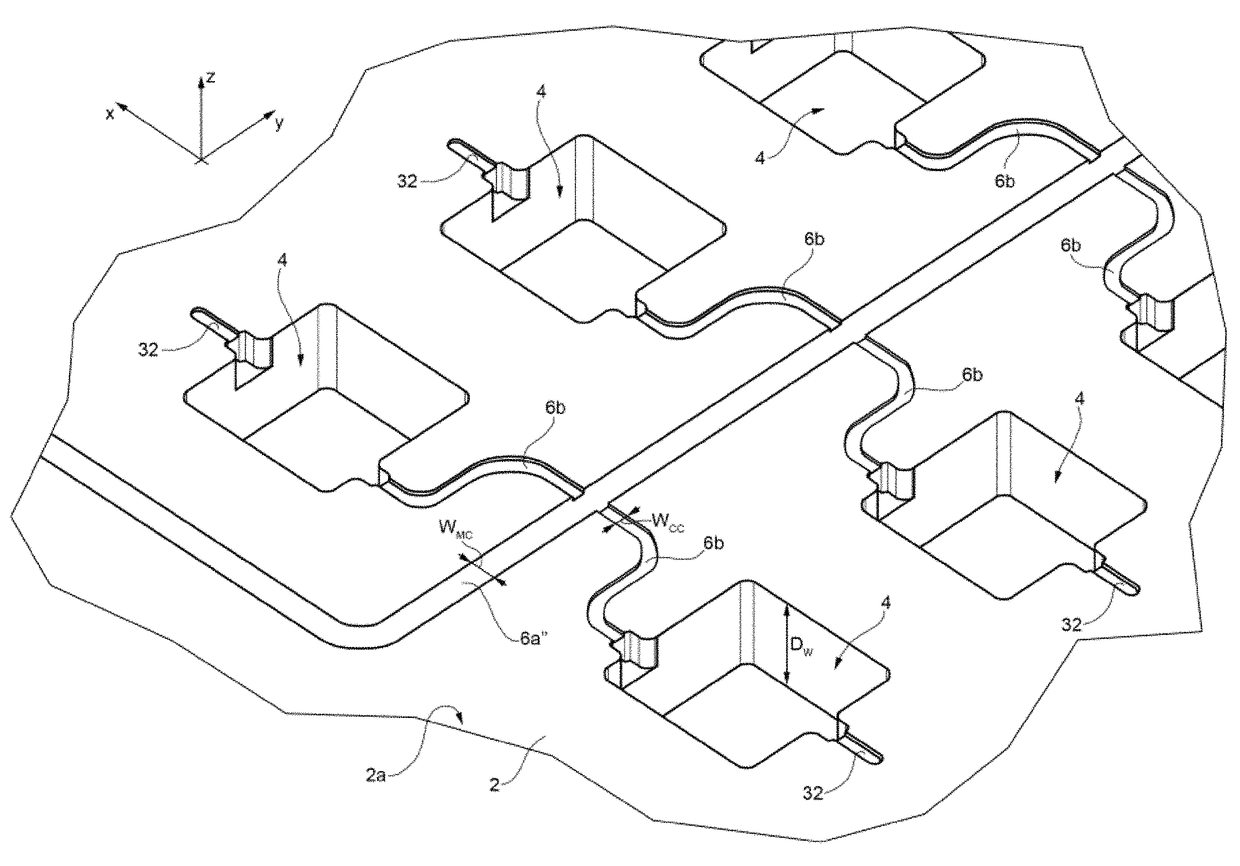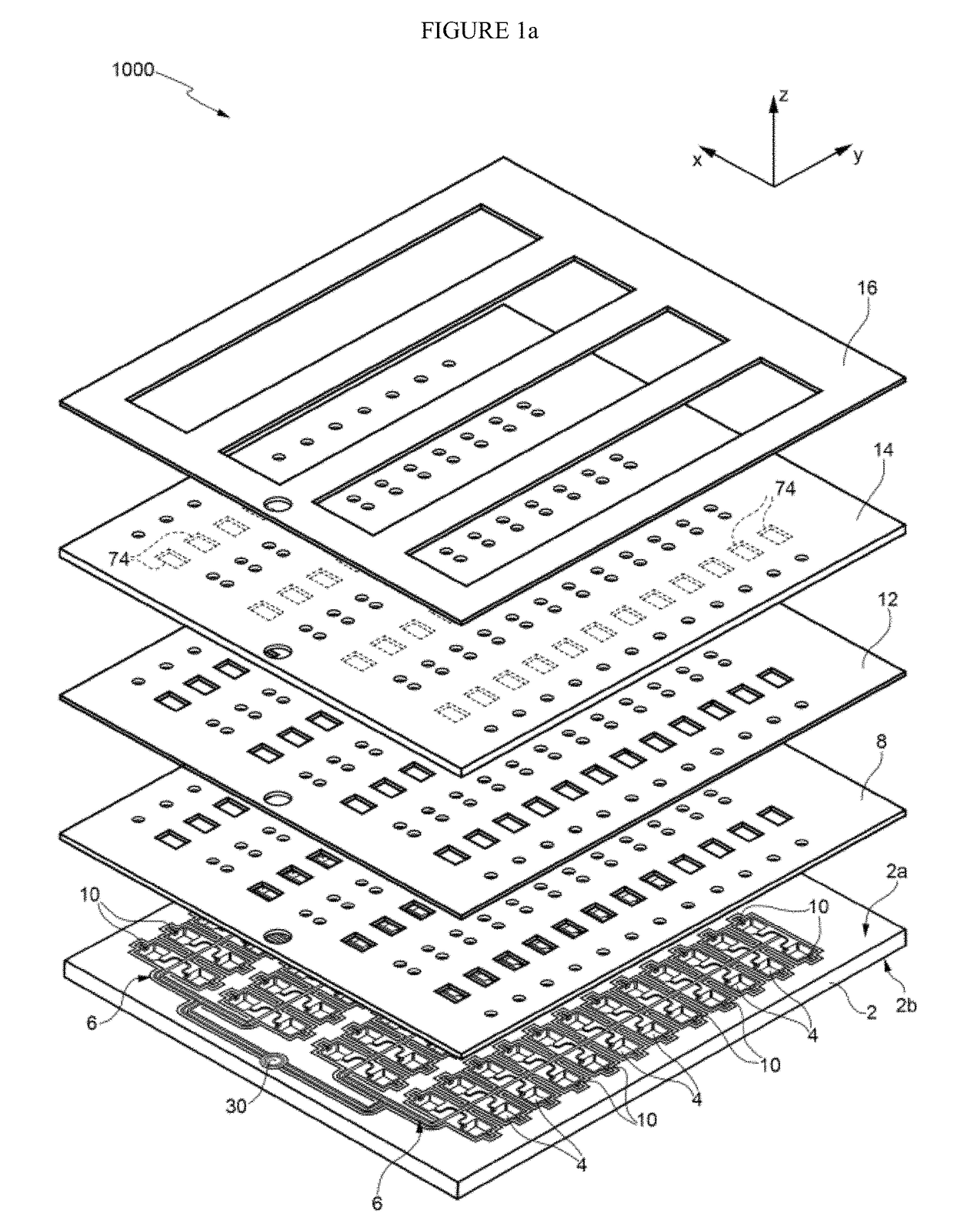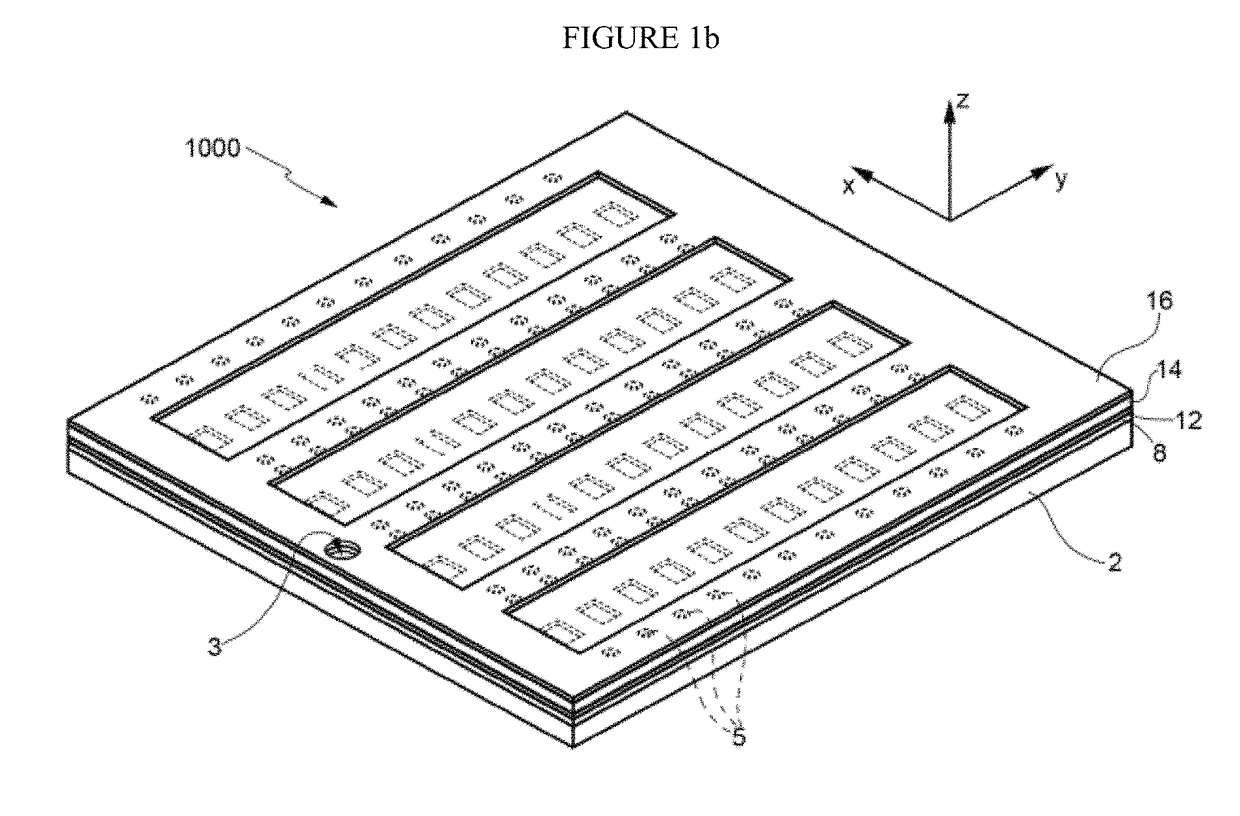Microfluidic PCR device
a microfluidic and pcr technology, applied in bio laboratory glassware, chemistry apparatus and processes, etc., can solve the problems of overall cost, insufficient parallelism of microfluidic platforms, and cost of both disposable devices and reagents
- Summary
- Abstract
- Description
- Claims
- Application Information
AI Technical Summary
Benefits of technology
Problems solved by technology
Method used
Image
Examples
Embodiment Construction
[0063]One embodiment herein described provides a microfluidic device comprising a body (e.g., semiconductor body that can be processed according to known MEMS manufacturing techniques) having a first side and a second side opposite to one another, and having on the first side of the body: at least a couple of wells or chambers adapted to store a fluid or a liquid; an inlet region forming an entrance point for the fluid or liquid to be supplied to the wells; a main channel fluidically connected to the inlet region; and at least a couple of secondary channels fluidically connecting the main channel to a respective well.
[0064]The wells extend within the body for a first depth, the main channel extends within the body for a second depth, the secondary channels extend within the body for a third depth, the first depth being greater than the second depth, and the second depth being greater than the third depth. The multi-level channels and chambers thus provide for a reduced contamination...
PUM
| Property | Measurement | Unit |
|---|---|---|
| thickness | aaaaa | aaaaa |
| thickness | aaaaa | aaaaa |
| thickness | aaaaa | aaaaa |
Abstract
Description
Claims
Application Information
 Login to View More
Login to View More - R&D
- Intellectual Property
- Life Sciences
- Materials
- Tech Scout
- Unparalleled Data Quality
- Higher Quality Content
- 60% Fewer Hallucinations
Browse by: Latest US Patents, China's latest patents, Technical Efficacy Thesaurus, Application Domain, Technology Topic, Popular Technical Reports.
© 2025 PatSnap. All rights reserved.Legal|Privacy policy|Modern Slavery Act Transparency Statement|Sitemap|About US| Contact US: help@patsnap.com



